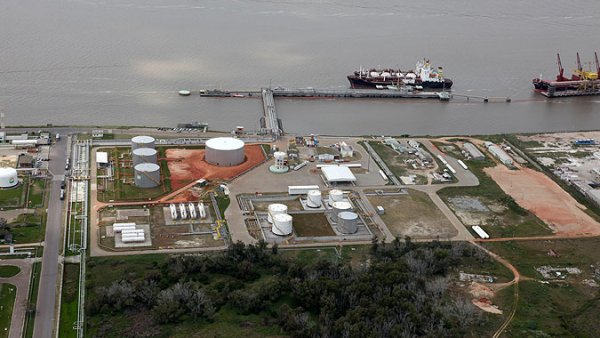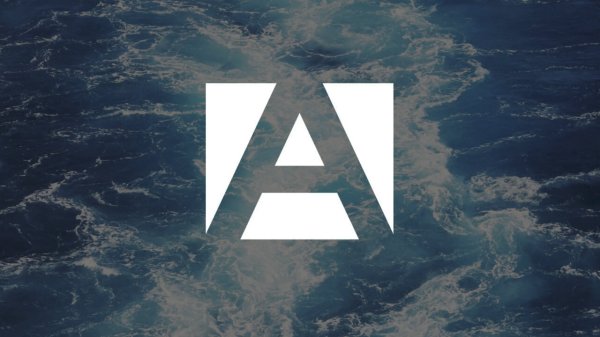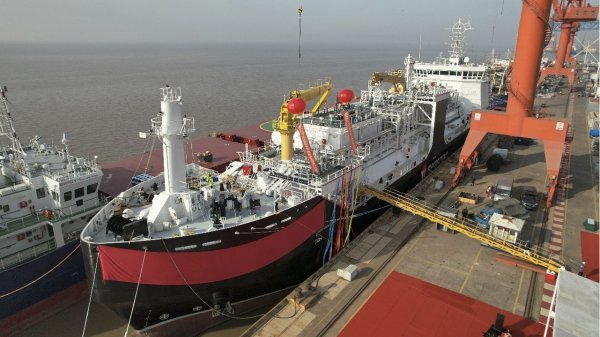ExxonMobil offers insight into five-year project to build scaled-down test engine
New 10-year research programme is designed to help the supplier position itself at the cutting edge of
marine fuels and lubrication research.
ExxonMobil has provided further insight into the five-year design and construction project that led to the development of a one-tenth-scale working model of a single-cylinder, two-stroke marine diesel engine which the company is now using to support the development of the next generation of marine lubricants.
Built by an international consortium of engineers that was led by Mahle Powertrain and included Danish family-run engineering business Hans Jensen Lubricators, the scaled-down engine is now installed at Oak Ridge National Laboratory in Tennessee and is said to reproduce the temperatures and pressures found in a full-sized ship's engine using the same marine fuel and lubes.
Explaining the challenges of constructing the unique engine, Paul Truckel, Team Leader, Design & Development - Mahle Powertrain, said: "Most of the industry around here is geared up around automotive or, in some cases heavy duty diesel, but nothing quite this size. Conversely, a lot of the marine engine component suppliers are used to delivering components that are on a much larger scale, this being a one-tenth scale. So we were kind of stuck in this middle ground of too big for the automotive suppliers, too small for the marine diesel suppliers."
Among the technical requirements was a fully functioning smaller-sized oil flow control system. Vince Carey, consultant at ExxonMobil Paulsboro NJ, explained that it was important to have an accurate flow of cylinder oil to the liner, and a consistent flow to ensure that the experiments were well-controlled over time.
Research programme
Two months after the first successful engine firing, the research programme was officially launched at Oak Ridge on October 24, 2016.
The marine engine test facility has started a 10-year programme of experimental analysis which is designed to help ExxonMobil position itself the cutting edge of marine fuels and lubrication research in the face of new regulations and shorter R&D cycles resulting from the rapid pace of technology change.
Testing new fuels and lubrication oils on full-sized working engines is expensive and requires the regular removal of huge pistons to physically measure microscopic metal erosion and liner wear. The new test engine has been built to reduce the need for this, allowing researchers to trial different fuel and lubrication formulas under scientifically controlled conditions with faster results.
"We're trying to do step-out research. We're trying to be innovative, develop the next-generation of products that the business needs to sell. So this [test engine] will give us the tool that we need to develop those products for the future," said John Fogarty, Technical Program Leader - Marine, Gas Engine & Aviation Lubricants.
Built by an international consortium of engineers that was led by Mahle Powertrain and included Danish family-run engineering business Hans Jensen Lubricators, the scaled-down engine is now installed at Oak Ridge National Laboratory in Tennessee and is said to reproduce the temperatures and pressures found in a full-sized ship's engine using the same marine fuel and lubes.
Explaining the challenges of constructing the unique engine, Paul Truckel, Team Leader, Design & Development - Mahle Powertrain, said: "Most of the industry around here is geared up around automotive or, in some cases heavy duty diesel, but nothing quite this size. Conversely, a lot of the marine engine component suppliers are used to delivering components that are on a much larger scale, this being a one-tenth scale. So we were kind of stuck in this middle ground of too big for the automotive suppliers, too small for the marine diesel suppliers."
Among the technical requirements was a fully functioning smaller-sized oil flow control system. Vince Carey, consultant at ExxonMobil Paulsboro NJ, explained that it was important to have an accurate flow of cylinder oil to the liner, and a consistent flow to ensure that the experiments were well-controlled over time.
Research programme
Two months after the first successful engine firing, the research programme was officially launched at Oak Ridge on October 24, 2016.
The marine engine test facility has started a 10-year programme of experimental analysis which is designed to help ExxonMobil position itself the cutting edge of marine fuels and lubrication research in the face of new regulations and shorter R&D cycles resulting from the rapid pace of technology change.
Testing new fuels and lubrication oils on full-sized working engines is expensive and requires the regular removal of huge pistons to physically measure microscopic metal erosion and liner wear. The new test engine has been built to reduce the need for this, allowing researchers to trial different fuel and lubrication formulas under scientifically controlled conditions with faster results.
"We're trying to do step-out research. We're trying to be innovative, develop the next-generation of products that the business needs to sell. So this [test engine] will give us the tool that we need to develop those products for the future," said John Fogarty, Technical Program Leader - Marine, Gas Engine & Aviation Lubricants.

|
IMO approves pricing mechanism based on GHG intensity thresholds
Charges to be levied on ships that do not meet yearly GHG fuel intensity reduction targets. |
|
|
|
||

|
VARO Energy expands renewable portfolio with Preem acquisition
All-cash transaction expected to complete in the latter half of 2025. |
|
|
|
||

|
NYK trials biofuel in milestone coal carrier test
Vessel is used to test biofuel for domestic utility company. |
|
|
|
||

|
H-Line Shipping orders LNG bunkering vessel
Vessel with 18,000-cbm capacity to run on both LNG and MDO. |
|
|
|
||

|
How to engineer and manage green shipping fuels | Stanley George, VPS
Effective management strategies and insights for evolving fuel use. |
|
|
|
||

|
Swedish government bans scrubber wastewater discharges
Discharges from open-loop scrubbers to be prohibited in Swedish waters from July 2025. |
|
|
|
||

|
MAN Energy Solutions achieves 100% load milestone for ammonia engine
Latest tests validate fuel injection system throughout the entire load curve. |
|
|
|
||

|
Petrobras secures ISCC EU RED certification for B24 biofuel blend at Rio Grande
Blend consisting of 24% FAME is said to have been rigorously tested to meet international standards. |
|
|
|
||

|
Stolt-Nielsen to fully control Avenir LNG with acquisition
Share purchase agreement to buy all shares from Golar LNG and Aequitas. |
|
|
|
||

|
Bureau Veritas supports launch of CIMC SOE's LNG bunkering vessel
Handover of Seaspan Energy's cutting-edge 7,600-cbm vessel completed. |
|
|
|
||
Related Links
- · ExxonMobil, Eagle LNG Partners and Crowley sign LNG bunkering agreement [Insights]
- · Mobilgard data shows 50% of ships are not operating at optimal feed rates [Insights]
- · ExxonMobil tackles fuel switching in latest video [Insights]
- · ExxonMobil issues guidelines to prevent cross-contamination of marine fuels [Insights]
- · ExxonMobil aims to drive development of next-gen lubes with new test engine [Insights]

